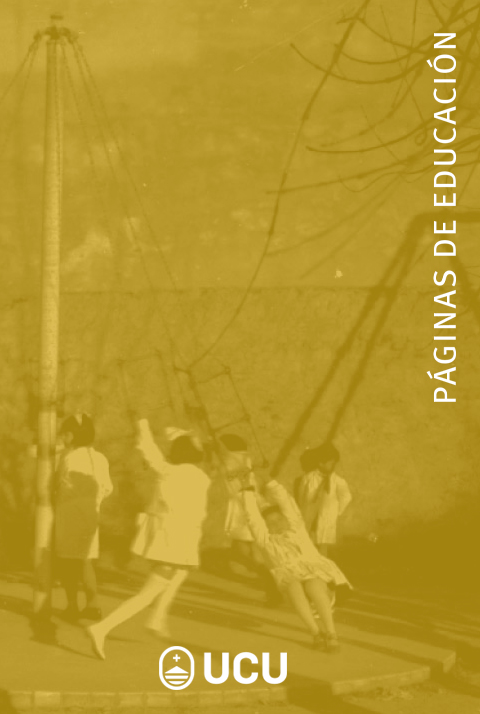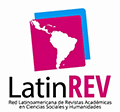Online Meetings in Early Childhood Education: A Bonding and Educational Experience in Times of COVID-19
DOI:
https://doi.org/10.22235/pe.v14i1.2204Keywords:
early education, new technologies, e-learning, video calls, pandemic, COVID-19Abstract
The purpose of this article is to report a bonding and educational experience focused on the use of new technologies, specifically video calls, with children in early education. It is a case study focused on the experience of using Skype with children from 2 to 3 years old. These online meetings were held weekly for three months due to the situation caused by the covid-19 pandemic, which involved confinement measures and school closures. From an autoethnographic study, based on observation and data collection in a diary, the results develop a series of topic proposals that facilitate interaction and bonding among classmates through a screen, in this case due to the exceptional circumstances. It is concluded that through these online meetings it was possible to maintain contact, share experiences and develop skills in a virtual environment of positive interaction.
Downloads
References
Academia Americana de Pediatría. (2018). Children and Media Tips from the American Academy Pediatrics. Recuperado el 6 de junio de 2020 de https://www.aap.org/en-us/about-the-aap/aap-press-room/news-features-and-safety-tips/Pages/Children-and-Media-Tips.aspx
Aguilera Cuta, A. M. (2019). Las tecnologías de la información en los menores de 2 a 6 años, un abordaje lúdico para incentivar el aprendizaje significativo. Bogotá, Colombia: Fundación Universitaria Los Libertadores.
Arnau, C. (2009). Skype en educación. Didáctica, Innovación y Multimedia, 15. Recuperado de https://www.raco.cat/index.php/DIM/article/view/166859
Assathiany, R., Guery, E., Caron, F. M., Cheymol, J., Picherot, G., Foucaud, P. y Gelbert, N. (2018). Children and screens: A survey by French pediatricians. Archives de Pediatrie, 25(2), 84-88.
Beltrán, J., Venegas, M., Villar Aguilés, A., Andrés-Cabello, S., Jareño-Ruiz, D. y de-Gracia-Soriano, P. (2020). Educar en época de confinamiento: La tarea de renovar un mundo común. Revista de Sociología de la Educación (RASE), 13(2), 92-104.
Blackwell, C. K., Lauricella, A. R. y Wartella, E. (2014). Factors influencing digital technology use in early childhood education. Computers & Education, 77, 82-90.
Busch, G. (2018). How Families Use Video Communication Technologies During Intergenerational Skype Sessions. En S. J. Danby, M. Fleer, C. Davidson y M. Hatzigianni (Eds.), Digital Childhoods (pp. 17-32). Singapore: Springer.
Byeon, H. y Hong, S. (2015). Relationship between television viewing and language delay in toddlers: Evidence from a Korea national cross-sectional survey. PLoS one, 10(3), e0120663.
Comisión Europea. (2019). DigComp: The European Digital Competence Framework. Recuperado el 5 de junio de 2020 de https://ec.europa.eu/social/main.jsp?catId=738&langId=es&pubId=8203&furtherPubs=yes
Cook, K. C. y Grant-Davis, K. (2020). Online education: Global questions, local answers. New York, NY: Routledge.
Cotino Hueso, L. (2020). La enseñanza digital en serio y el derecho a la educación en tiempos del coronavirus. Revista de educación y derecho = Education and law review, 21(6). https://doi.org/10.1344/REYD2020.21.31283
Crego López, E. (2020). El uso de las tecnologías en la primera infancia (0-3 años) (Preprint). Valencia: Universitat de Valencia, Facultat de Psicologia.
De Pablos Pons, J., Colás Bravo, P. y González Ramírez, T. (2010). Factores facilitadores de la innovación con TIC en los centros escolares. Un análisis comparativo entre diferentes políticas educativas autonómicas. Revista de Educación, 352, 23-51.
Ellis, C., Adams, T. y Bochner, A. (2015). Autoetnografía: un panorama. Astrolabio, 14, 249 -273.
Gértrudix Barrio, F. y Ballesteros Ávila, V. (2014). El uso de herramientas 2.0 como recursos innovadores en el aprendizaje de niños y niñas en Educación Infantil. Un estudio de caso de investigación-acción. Edutec. Revista Electrónica de Tecnología Educativa, 49, a274.
Gobierno de Chile. (2020). Orientaciones al sistema de Educación Parvularia en contexto COVID-19. Santiago de Chile: Ministerio de Educación. .
Guerrero Muñoz, J. (2014). El valor de la auto-etnografía como fuente para la investigación social: del método a la narrativa. AZARBE, Revista Internacional de Trabajo Social y Bienestar, 3, 237-242.
Guerrero Muñoz, J. (2017). Las claves de la autoetnografía como método de investigación en la práctica social: conciencia y transformatividad. Investigação Qualitativa em Ciências Sociais, 3, 130-134.
Hayano, D. (1979). Auto-ethnography: Paradigms, problems and prospects. Human Organization, 38(1), 99-104.
Heider, K. G. (1975). What do people do? Dani auto-ethnography. Journal of Anthropological Research, 31(1), 3-17.
Instituto Nacional de Estadística. (2019). Equipamiento y uso de TIC en los hogares. Año 2019. Recuperado el 15 de mayo de 2020 de https://www.ine.es/dyngs/INEbase/es/operacion.htm?c=estadistica_C&cid=1254736176741&menu=ultiDatos&idp=1254735976608
Jurado Jiménez, M. D. (2011). El diario como un instrumento de autoformación e investigación. Revista Qurriculum, 24, 173-200.
King-O’Riain, R. C. (2013). Transconnective space, emotions and Skype: The Transnational Emotional Practices of Mixed International Couples in the Republic of Ireland. En T. Benski, y E. Fisher (Eds.), Internet and emotions (pp. 131-143). Londres, Reino Unido: Routledge.
King‐O’Riain, R. C. (2015). Emotional streaming and transconnectivity: Skype and emotion practices in transnational families in Ireland. Global Networks, 15(2), 256-273.
Longhurst, R. (2013). Using Skype to mother: Bodies, emotions, visuality, and screens. Environment and Planning D: Society and Space, 31(4), 664-679.
Martín-Bylund, A. y Stenliden, L. (2020). Closer to far away: transcending the spatial in transnational families’ online video calling. Journal of Multilingual and Multicultural Development, 1-13.
McClure, E. R., Chentsova-Dutton, Y. E., Barr, R. F., Holochwost S. J. y Parrott, W. G. (2015). ‘‘Facetime doesn’t count’’: video chat as an exception to media restrictions for infants and toddlers. International Journal of Child-Computer Interaction, 6, 1-6.
Morata Sanz, J. I. (2020). Uso de TIC en orientación educativa en tiempos de COVID-19. Revista AOSMA, 28, 88-91.
Palaiologou, I. (2016). Children under five and digital technologies: implications for early years pedagogy. European Early Childhood Education Research Journal, 24(1), 5-24.
Pantaleoni, A. (2020). Francesco Tonucci: “No perdamos este tiempo precioso dando deberes”. El País. Recuperado el 2 de junio de 2020 de https://elpais.com/sociedad/2020-04-11/francesco-tonucci-no-perdamos-este-tiempo-precioso-dando-deberes.html
Reuters Staff. (2020). Microsoft says Skype users surge 70% amid coronavirus outbreak. Reuters. Recuperado el 4 de junio de 2020 de https://www.reuters.com/article/us-microsoft-skype/microsoft-says-skype-users-surge-70-amid-coronavirus-outbreak-idUSKBN21H2J7
Sandín Esteban, M. P. (2003). Investigación Cualitativa en Educación. Fundamentos y Tradiciones. Madrid, España: Mc Graw and Hill.
Sevillano García, M. L. y Rodríguez Cortés, R. (2013). Integración de las tecnologías de la información y comunicación en educación infantil en Navarra (Spain). Pixel-Bit. Revista de Medios y Educación, 42, 75-87.
Turkle, S. (2017). En defensa de la conversación: el poder de la conversación en la era digital. Barcelona, España: Ático de los Libros.
Unicef. (2020). El nuevo coronavirus y el derecho a la educación. Recuperado el 20 de mayo de 2020 de https://www.unicef.es/educa/blog/nuevo-coronavirus-derecho-educacion
Unión Europea. (2006). Recomendación 2006/962/CE del Parlamento Europeo y del Consejo, de 18 de diciembre de 2006, sobre las competencias clave para el aprendizaje permanente. Recuperado de http://data.europa.eu/eli/reco/2006/962/oj
Zubizarreta, A. C. y Caldeiro, M. C. (2019). Móviles y primera infancia: análisis de una convivencia determinada por la cotidianeidad. En P. de Casas Moreno, G. Paramio Pérez y A. Castro Zubizarreta (Coords.), Educación y comunicación mediada por las tecnologías: tendencias y retos de investigación (pp. 13-28). Sevilla, España: Egregius Ediciones.
Downloads
Published
How to Cite
Issue
Section
License
Copyright (c) 2021 Páginas de Educación

This work is licensed under a Creative Commons Attribution 4.0 International License.















